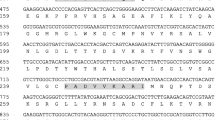Abstract
Physiological role of mitochondrial uncoupling proteins UCP2 and UCP3, homologous to UCP1 from brown adipose tissue, is unclear. It was proposed recently that UCP2 and UCP3 are metabolic triggers that switch oxidation of glucose to oxidation of fatty acids, exporting pyruvate from mitochondria. In the present study we tried to verify this hypothesis using ground squirrels (Spermophilus undulatus), since expression of all UCPs in different tissues increases during winter season, and UCP1 is abundant in brown fat. We confirmed the possibility of nonspecific transport of pyruvate through UCP1 in brown fat mitochondria and tried to identify similar transport in liver and skeletal muscle mitochondria where UCP2 and UCP3 are expressed. Transport of pyruvate mediated by UCP1 in mitochondria of brown fat was observed using valinomycin-induced swelling of non-respiring mitochondria in 55 mM potassium pyruvate and was inhibited by GDP. In contrast, mitochondria of liver and skeletal muscles in similar conditions did not exhibit electrogenic transport of pyruvate anions that could be related to functioning of UCP2 and UCP3. At the same time, functioning of pyruvate carrier was detected in these mitochondria by nigericin-induced passive swelling or valinomycin-induced active swelling in potassium pyruvate that was inhibited by α-CHC, a specific inhibitor of the pyruvate carrier. Thus, our results suggest that in contrast to UCP1 of brown fat, UCP2 and UCP3 from intact liver and skeletal muscle mitochondria of winter active ground squirrels are unable to carry out pyruvate transport.
Similar content being viewed by others
References
Ricquier D., Bouillaud F. 2000. The uncoupling protein homologues: UCP1, UCP2, UCP3, StUCP and AtUCP. Biochem. J. 345, 161–179.
Nedergaard J., Cannon B. 2003. The ‘novel’ ‘uncoupling’ protein UCP2 and UCP3: What do they really do? Pros and cons for suggested functions. Exp. Physiol. 88, 65–84.
Nicholls D.G., Locke R.M. 1984. Thermogenic mechanisms in brown fat. Physiol. Rev. 64, 1–64.
Cannon B., Nedergaard J. 2004. Brown adipose tissue: Function and physiological significance. Physiol. Rev. 84, 277–359.
Skulachev V.P. 1991. Fatty acid circuit as a physiological mechanism of uncoupling of oxidative phosphorylation. FEBS Lett. 294, 158–162.
Garlid K.D., Orosz D.E., Modriansky M., Vassanelli S., Jezek P. 1996. On the mechanism of fatty acid-induced proton transport by mitochondrial uncoupling protein. J. Biol. Chem. 271, 2615–2620.
Jaburek M., Varecha M., Gimeno R.E., Dembski M., Jezek P., Zhang M., Burn P., Tartaglia L.A., Garlid K.D. 1999. Transport function and regulation of mitochondrial uncoupling proteins 2 and 3. J. Biol. Chem. 274, 26003–26007.
Echtay K.S., Winkler E., Frischmuth K., Klingenberg M. 2001. Uncoupling proteins 2 and 3 are highly active H+ transporters and highly nucleotide sensitive when activated by coenzyme Q (ubiquinone). Proc. Natl. Acad. Sci. USA. 98(4), 1416–1421.
Amerhanov Z.G., Komelina (Smirnova) N.P., Markova O.V., Kolaeva S.G., Solomonov N.G. 2004. Involvement of some carrier proteins in thermoregulatory enhancement of respiration of mitochondria of the liver and skeletal muscles of ground squirrels (Citellus undulatus) awakening from hibernation. Dokl. Biochem. Biophys. 397(2), 213–216.
Komelina N.P., Amerkhanov Z.G. 2010. A comparative study of the inhibitory effects of purine nucleotides and carboxyatractylate on the uncoupling protein-3 and adenine nucleotide translocase. Acta Biochimica Polonica. 57(4), 413–419.
Couplan E., Mar Gonzalez-Barroso M., Alves-Guerra M.C., Ricquier D., Goubern M., Bouillaud F. 2002. No evidence for a basal, retinoic, or superoxide-induced uncoupling activity of the uncoupling protein 2 present in spleen or lung mitochondria. J. Biol. Chem. 277, 26268–26275.
Pecqueur C., Alves-Guerra C., Ricquier D., Bouillaud F. 2009. UCP2, a metabolic sensor coupling glucose oxidation to mitochondrial metabolism? IUBMB Life. 61(7), 762–767.
Pecqueur C., Bui T., Gelly, C., Hauchard J., Barbot C., Bouillaud F., Ricquier D., Miroux B., Thompson C.B. 2008. Uncoupling protein-2 controls proliferation by promoting fatty acid oxidation and limiting glycolysisderived pyruvate utilization. FASEB J. 22, 9–18.
Jezek P., Garlid K.D. 1990. New substrates and competitive inhibitors of the Cl-translocating pathway of the uncoupling protein of brown adipose tissue mitochondria. J. Biol. Chem. 265, 19303–19311.
Jezek P., Borecky J. 1998. Mitochondrial uncoupling protein may participate in futile cycling of pyruvate and other monocarboxylates. Am. J. Physiol. 275, C496–C504.
Kalabukhov N.I. 1985. Spiachka mlekopitayushchikh (Hibernation in mammals). Moscow: Nauka.
Boyer B.B., Barnes B.M., Lowell B.B., Grujic D. 1998. Differential regulation of uncoupling protein gene homologues in multiple tissues of hibernating ground squirrels. Am. J. Physiol. 275, R1232–R1238.
Staples J.F. Brown J.C.L. 2008. Mitochondrial metabolism in hibernation and daily torpor: A review. J. Comp. Physiol. 178, 811–827.
Brustovetsky N.N., Amerkanov Z.G., Yegorova M.E., Mohkova E.N., Skulachev V.P. 1990. Carboxyatractylate-sensitive uncoupling in liver mitochondria from ground squirrels during hibernation and arousal. FEBS Lett. 272, 190–192.
Andreyev A., Bondareva T.O., Dedukhova V.I., Mokhova E.N., Skulachev V.P., Tsofina L.M., Volkov N.I., Vygodina T.V. 1989. The ATP/ADP antiporter is involved in the uncoupling effect of fatty acids on mitochondria. Eur. J. Biochem. 182, 585–592.
Hittelman K.J., Lindberg O., Cannon B. 1969. Oxidative phosphorylation and compartmentation of fatty acid metabolism in brown fat mitochondria. Eur. J. Biochem. 11(1), 183–192.
Halestrap A.P., Denton R.M. 1974. Specific inhibition of pyruvate transport in rat liver mitochondria and human erythrocytes by α-cyano-4-hydroxycinnamate. Biochem. J. 138(2), 313–316.
Harper J.A., Stuart J.A., Jekabsons M.B., Roussel D., Brindle K.M., Dickinson K., Jones R.B., Brand M.D. 2002. Artifactual uncoupling by uncoupling protein 3 in yeast mitochondria at the concentrations found in mouse and rat skeletal-muscle mitochondria. Biochem. J. 361, 49–56.
Author information
Authors and Affiliations
Corresponding author
Additional information
Original Russian Text © N.P. Komelina, Z.G. Amerkhanov, 2013, published in Biologicheskie Membrany, 2013, Vol. 30, No. 5–6, pp. 412–421.
Rights and permissions
About this article
Cite this article
Komelina, N.P., Amerkhanov, Z.G. Uncoupling proteins UCP2 and UCP3 from mitochondria of liver and skeletal muscle of ground squirrel Spermophilus undulatus do not transport pyruvate in contrast to UCP1 from brown adipose tissue. Biochem. Moscow Suppl. Ser. A 8, 73–81 (2014). https://doi.org/10.1134/S1990747813050073
Received:
Published:
Issue Date:
DOI: https://doi.org/10.1134/S1990747813050073




